January 20, 2023
Having an alarm go off when you’re retired, especially an early one, is a rude awakening. It was not quite 6 am and already the sun had come through the thin curtains and we realized we still hadn’t fully acclimated to the time zone.
During breakfast, we met two men from Brazil who were traveling on adventure motorcycles and had already ridden over 4,000 miles. One of the bikes was just like our BMW GS and I wondered about what it would be like to travel that far on two wheels. When we told them we were impressed by their adventure, they scoffed and said to wait until we meet the older couple traveling from Denmark on motorcycles built in 1936.
We walked down the steep hill to the tour boat office where we handed a slip of paper from Maria (who had still asked for no money) and were given boarding passes to a large catamaran that would take us into the Beagle Channel, stopping at one of Susan’s bucket lists places, Isla Martillo (aka Penguin Island).
The weather forecast was for unusually benign conditions; Beagle Channel is not far from Cape Horn, whose reputation is legendary around the world to sailors, known as the roughest water anywhere. Hundreds of ships sank and passengers and crew perished from storms while rounding the Horn before the Panama Canal was built.
Our boat was about 75 feet long and comfortable, if crowded, which would become a problem later. We were both excited as the boat left the dock; I’m especially happy any time I’m on the water. As our boat roared out into the Beagle Channel, we looked back on at the spectacular view of Ushuaia and the surrounding snow-topped mountains.
Soon, we passed the southernmost lighthouse in the world as a 15-knot tail wind sprang up. The Les Eclaireurs lighthouse has been guiding sea-going vessels to Ushuaia since 1920.
The low rocky islands around the lighthouse were home to cormorants, gulls and hair seals. As Maria had recommended, we positioned ourselves at the bow outside, wanting to have the best view. It was in the upper 40’s with some sun breaks as we continued east along the two-mile wide channel with Argentina on our left and Chile on our right. I saved a spot on the bow as Susan ducked inside to warm up periodically. No way was I going to risk losing a prime sightseeing spot. Eventually, the cold and wind took its toll and I put on more layers, which were still not enough and I started to shiver. A couple of cold hours later, Martillo Island hove into view.
We smelled them before we saw them. Magellanic and Gentoo penguins lived on the island and as we quietly rounded the lee side, suddenly hundreds of penguins spotted us and waddled a few yards farther up the rocky beach, with a few leaping out of the water onto land. The captain beached a hull while everyone on board snapped what must have totaled thousands of pictures of penguins.
Susan was ecstatic to finally see them in the wild and everyone chattered excitedly (mostly in Spanish) like kids. We soon realized that there were even a couple of much bigger King penguins roaming the beach. We watched the social interactions between the penguins, including observing them chase one another and turn around to help one who seemed to be injured or upset. Here we were, in Patagonia, on a boat in the Beagle Channel, looking at wild penguins. It was definitely another pinch-me moment.
Back in the boat, someone was sitting in the seats we had been using so we found other seats at a nearby booth. Soon, a family of four came in and complained loudly we were in “their” seats. We explained that someone was sitting where we were before, plus it was all open seating on the boat. Initially I felt a little bad for snagging the seats, but that changed when they became belligerent.
While their daughters remained standing, the parents sat down in the two remaining seats in the booth, the father shoving his body hard against me. The father had an obvious attitude while his wife was making a scene. One daughter spoke a tiny bit of English and informed us, like it somehow mattered, they were from Venezuela. As they became more confrontational, we became more stubborn. At one point while Susan was trying to speak to them in Spanish, the dad interrupted her in bad English with shut up! I’d had enough. I stood, looked down on him and told him not to say that again. He glared at her and muttered something in Spanish. With my fists balled, I said back to him, tell her to shut up again. In hindsight, maybe I should have challenged him to a duel on the bow, like gentlemen. Not wanting a fight to break out on his watch, an attendant came over and resolved things by finding some seats on the upper deck by a window. We happily agreed to move and apologized to the attendant for how the family had made his job so difficult.
Our new seats were perfect and we enjoyed the rest of the trip back. Susan stepped out into the cold a few more times to snap photos from the upper deck on the return and we again remarked how much Ushuaia looks like a twin of Homer, Alaska, with glacier-capped peaks near a large sound. The weather in the summer there is almost identical to summer weather in Ushuaia and, like Homer, the town marches up a hill with ever more spectacular views.
After the boat docked, we walked around the town again, stopping for some delicious empanadas at one of the few reasonably-priced restaurants. Stores and restaurants in Ushuaia were pretty expensive for Argentina, which is understandable because everything needed to be imported.
Ushuaia is actually on a huge island but it’s connected to mainland Argentina by a bridge far to the north. The southern part of Patagonia where we were is really just a lot of large islands surrounded by the Southern Ocean, with narrow strips of open water going roughly east/west.
We continued along the seafront promenade to the naval base on one end and an Islas Malvinas (aka Falklands Island) memorial on the other. Ushuaians are very sensitive about the Malvinas, still considering them to be part of Argentina and under illegal occupation by the British.
During our walk, we passed a few unexpected sights, including a shipwreck and a buried time capsule. The Time Capsule of Ushuaia, buried in 1992 beneath a large concrete pyramid, was a hermetically-sealed container holding six laser discs of TV shows from the 1990s and hundreds of written messages collected from all over Argentina. It’s due to be opened in 2492—1,000 years after Christopher Columbus’s arrival in the Americas.
We also passed by a parking area filled with Pan-American Highway overlander vehicles. The Pan-American is a network of roads stretching north-south from the Arctic Ocean through the Americas to Ushuaia at the Southern Ocean, (with about a 65-mile break at Darien Gap). We saw no North American license plates, most vehicles being from Argentina and Brazil.
We stopped and donated some U.S. dollars to a young couple we met who were selling small knickknacks from their van to help support a journey north on the Pan-American. They couldn’t wait to see California in particular and were excited to hear we’d just returned from a journey to the Arctic. They insisted on giving us a handmade penguin magnet.
Back at our hostel, we met the Danish couple who were riding two 1936 Nimbus motorcycles and chatted a while. The couple looked like anyone’s 70-something-year-old grandparents with pleasant faces and a quiet, friendly look. The wife spoke good English and told us about their adventure.
They had shipped the bikes to Nova Scotia and had ridden across Canada to Alaska, then north to the Arctic Ocean, then down the Pan-American Highway to Ushuaia, traversing over 20,000 miles in eight months. Even though their old bikes had no rear suspension, she said they were usually quite comfortable. We were awed when she said the only place where they were really not was on the dirt highway to the Arctic Ocean, many thousands of miles away that we’d been on a few months earlier in our 70-year newer truck. I couldn’t imagine riding the 1,100 miles round-trip on that rough dirt road on ancient motorcycles. Her husband, she said, could fix anything so they were relatively unconcerned about breakdowns. Truly an amazing couple. They’d given an entire new level of meaning to a Pan-American Highway adventure.
We had delayed our anniversary dinner for some time and decided tonight we’d go to the best restaurant in town. Restaurante Kaupé sat high up the hill with a spectacular view of the channel and the mountains and we had an epic dinner with good Argentine wine and the best Chilean sea bass either of us ever had. Which made sense as Chile was only a couple of miles away.
Back at our room, we finally got the cranky gas heater to come on, slowly warming us after the chilly walk from the restaurant. We still felt a little wobbly from the boat tour but even at 11 pm it was too light out to get to sleep. Argentinians stay up late, and even later, we discovered in the long summers of Patagonia, as thumping bass at a nearby bar kept us up until after midnight.

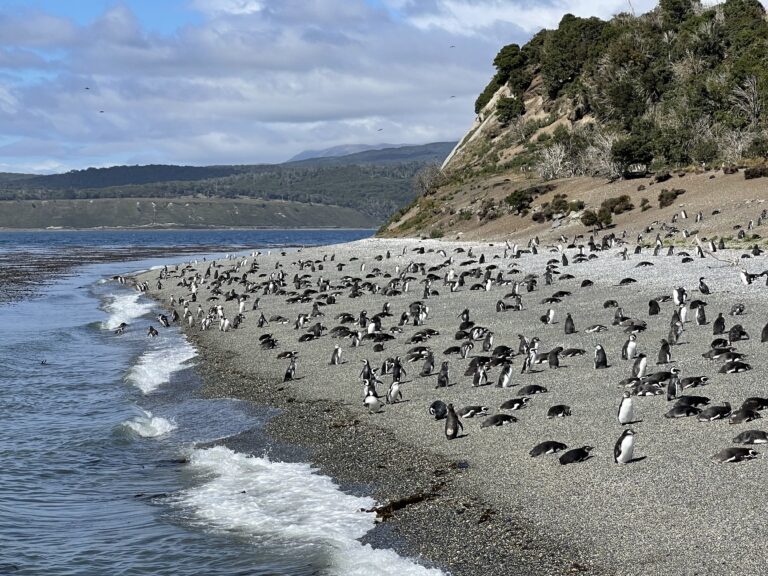
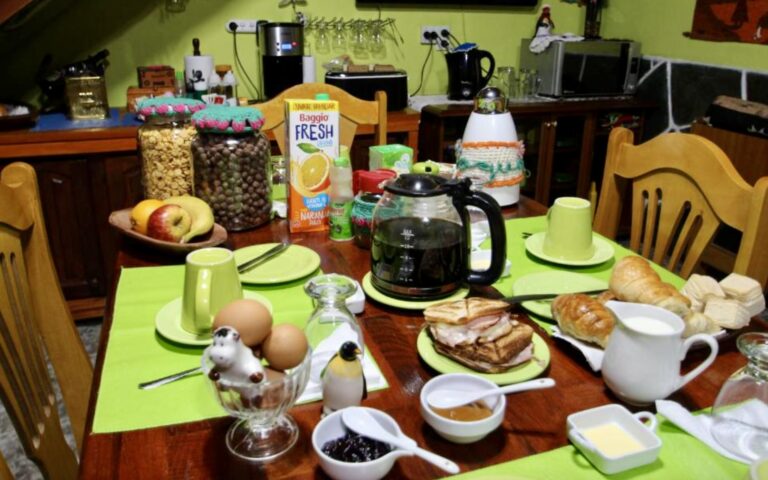
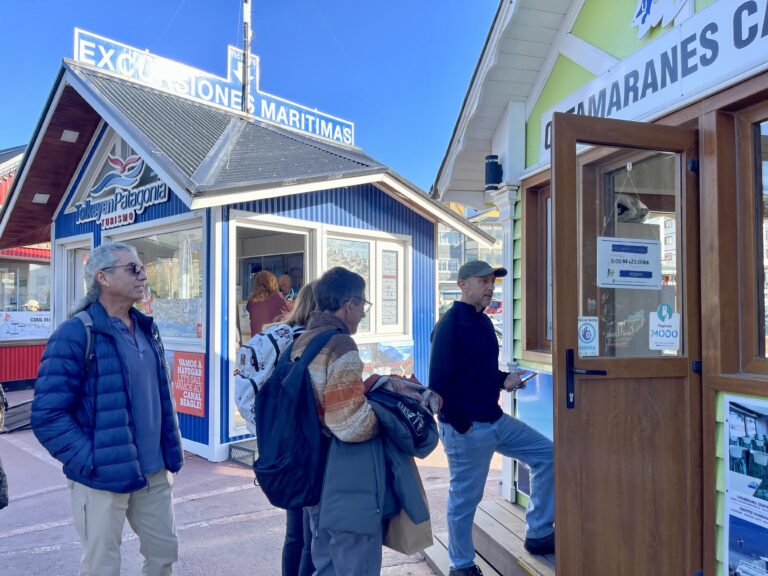
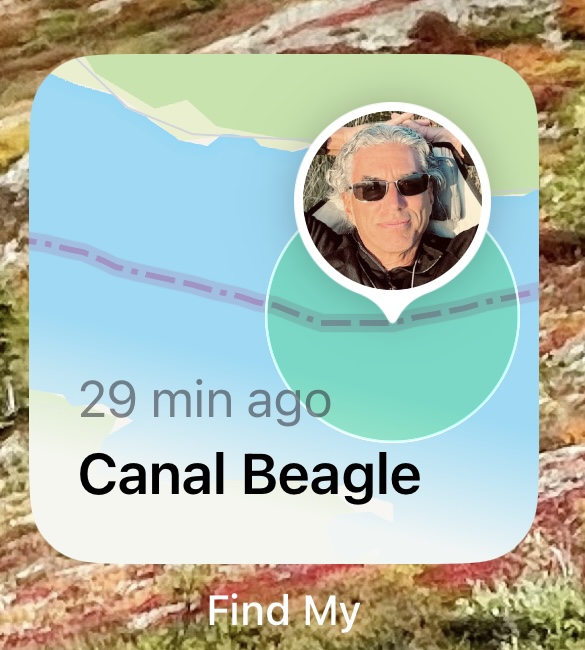
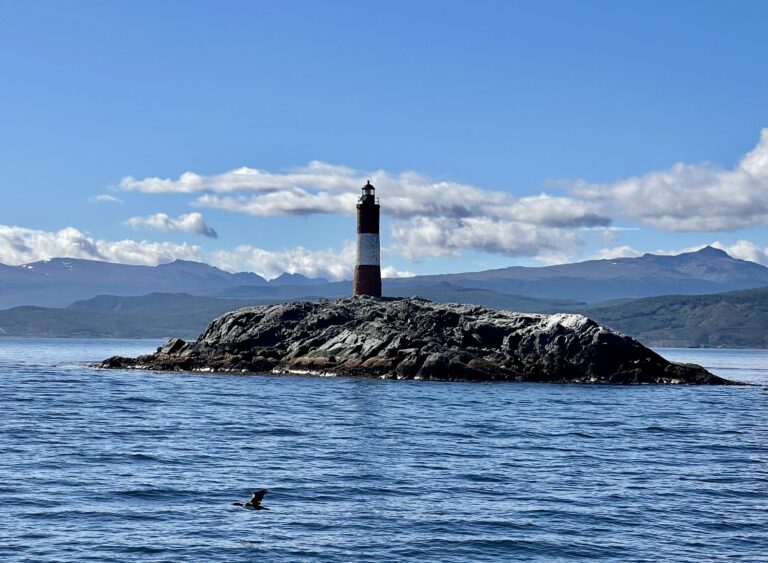
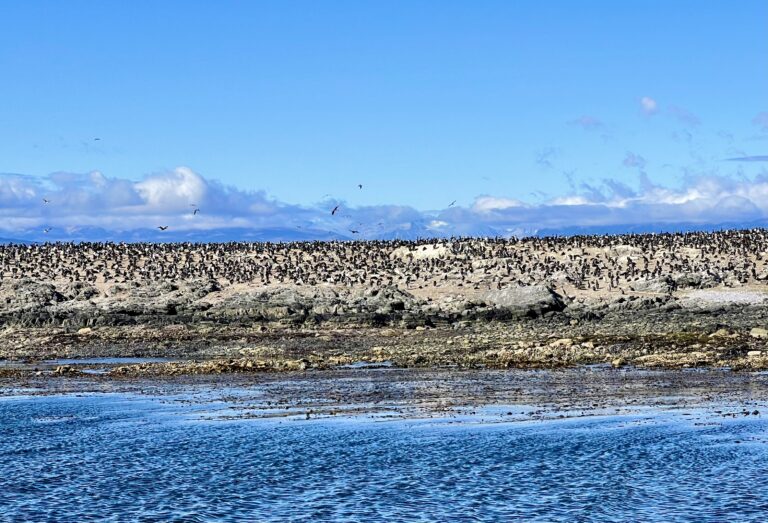
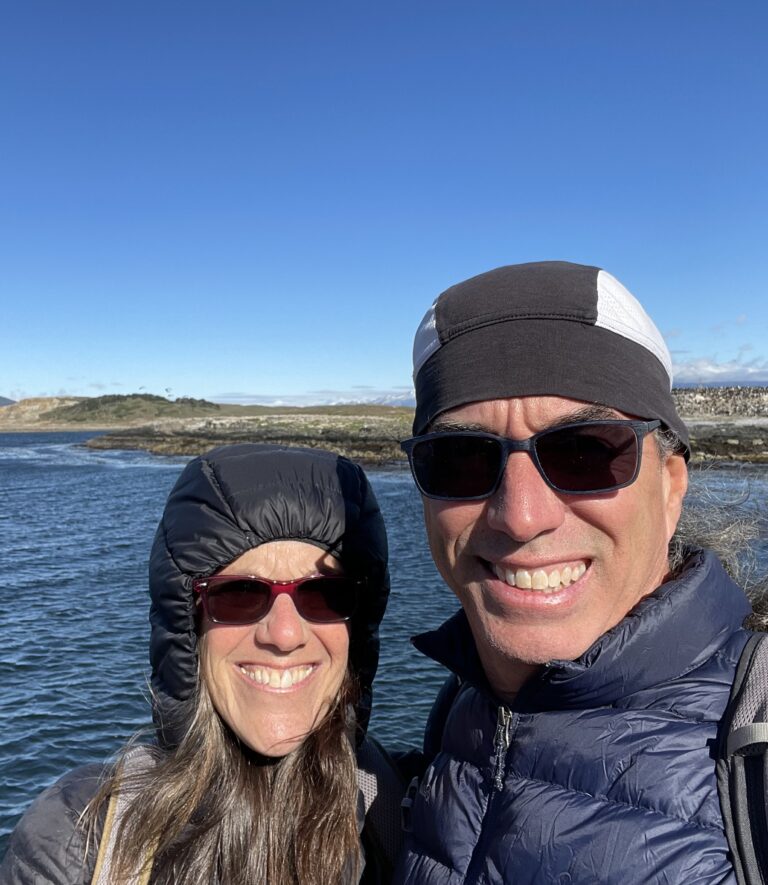
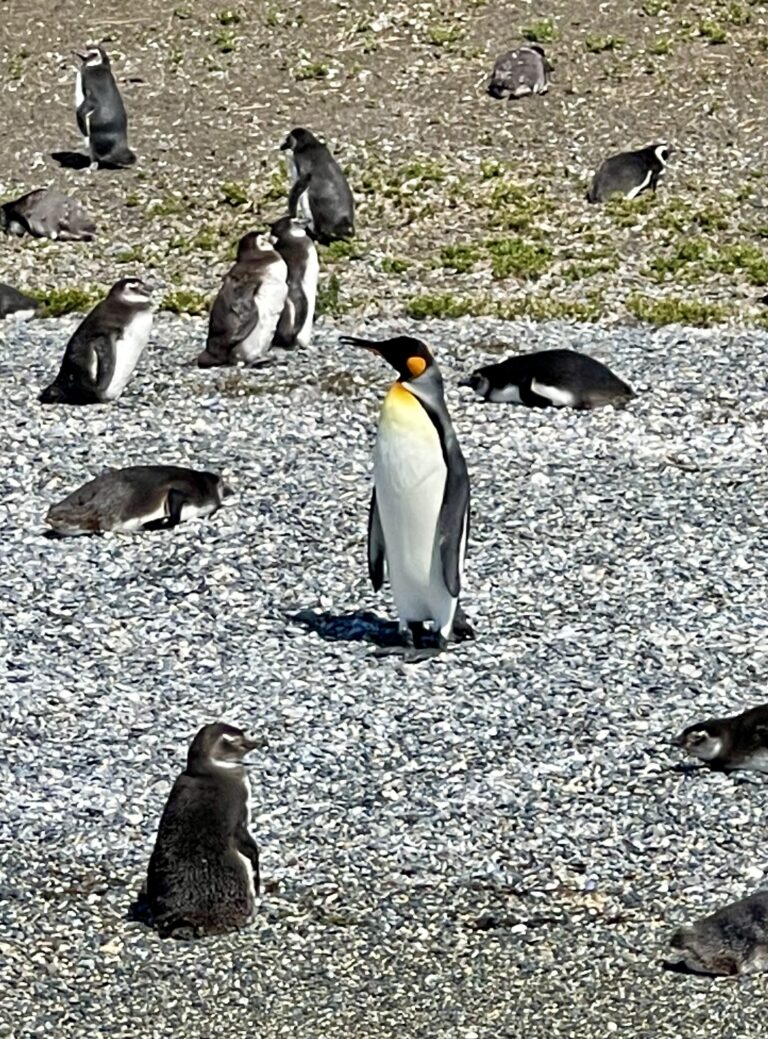
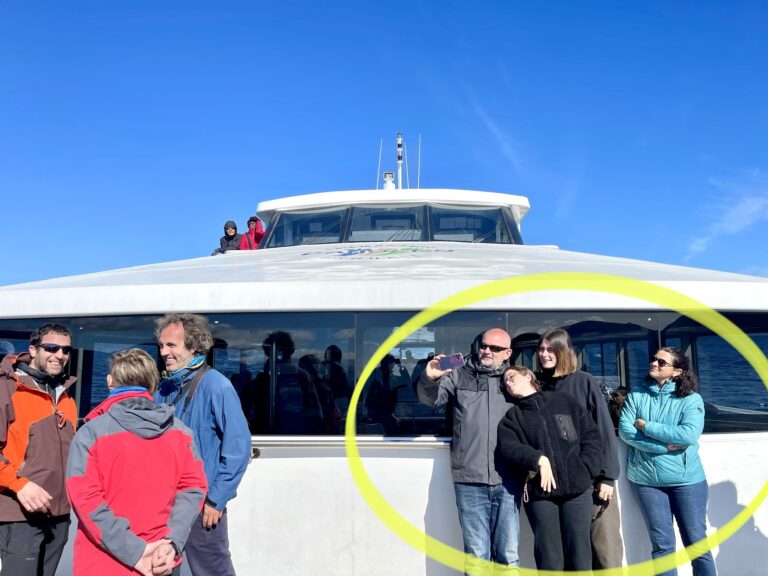
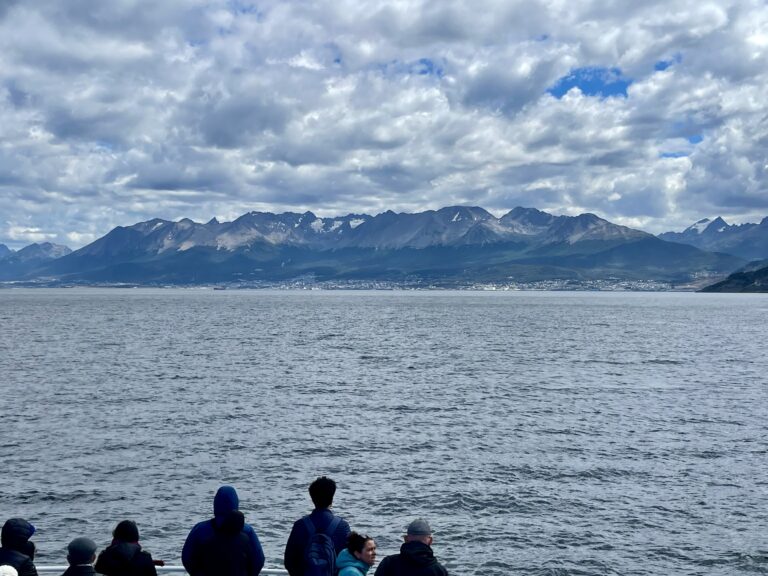
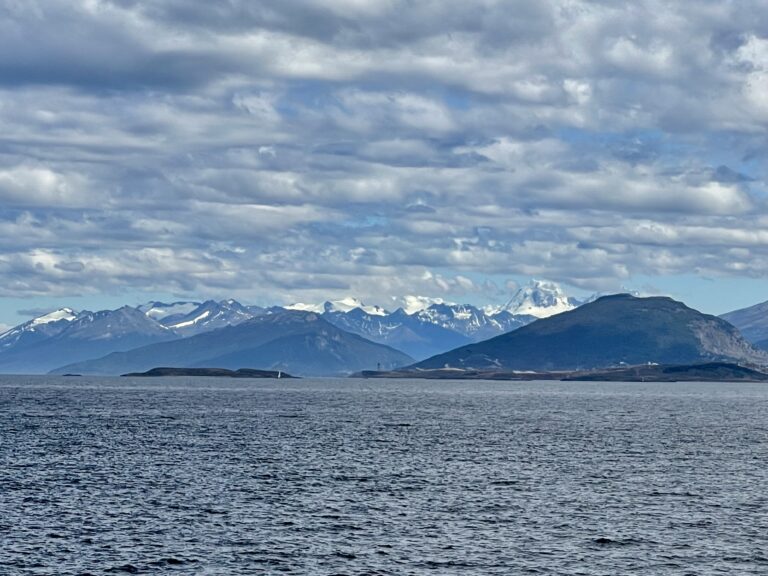
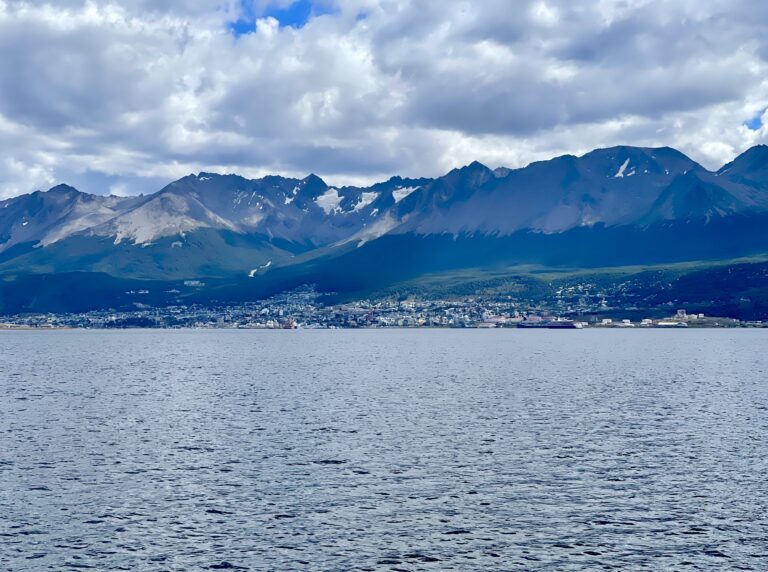
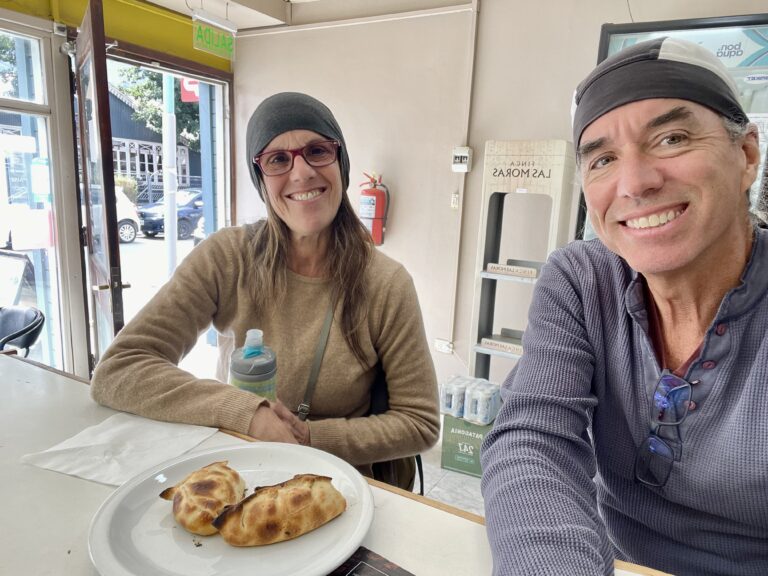
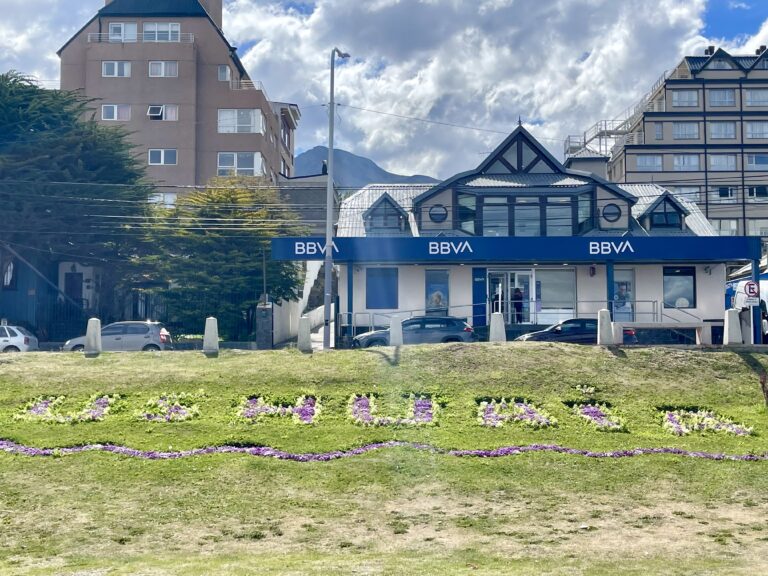
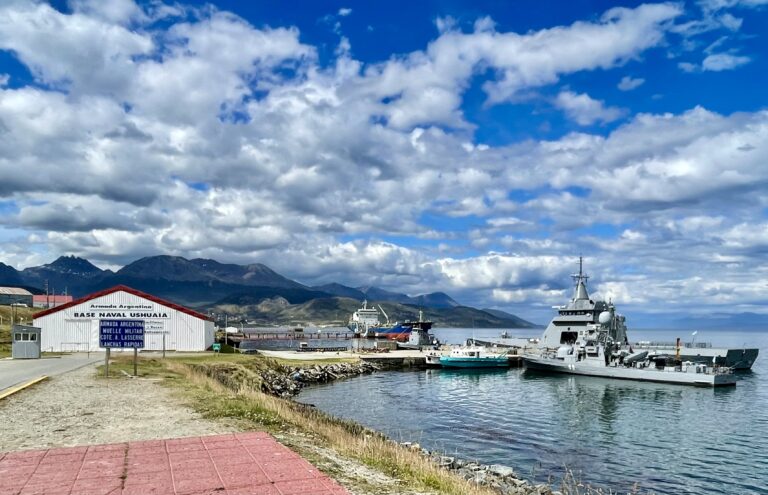
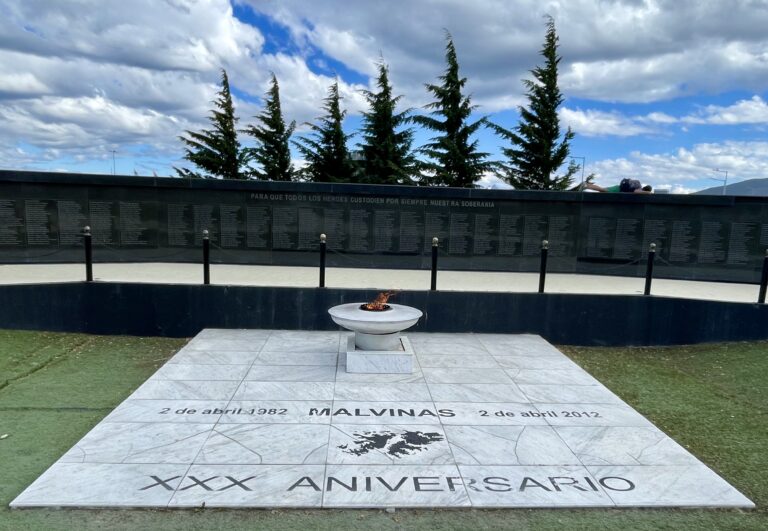
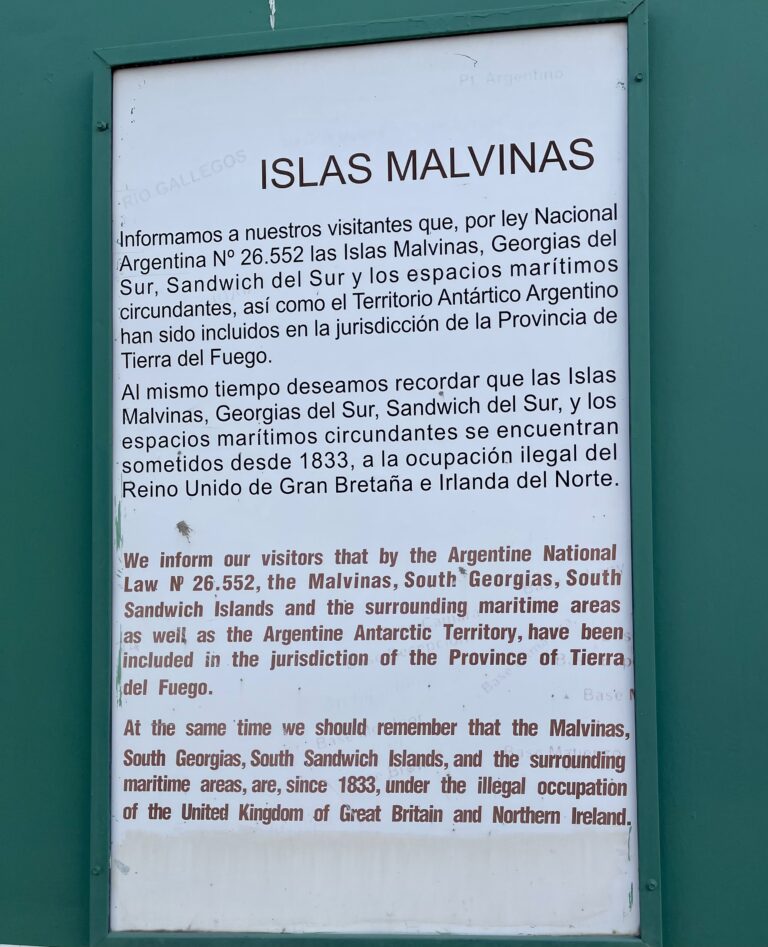
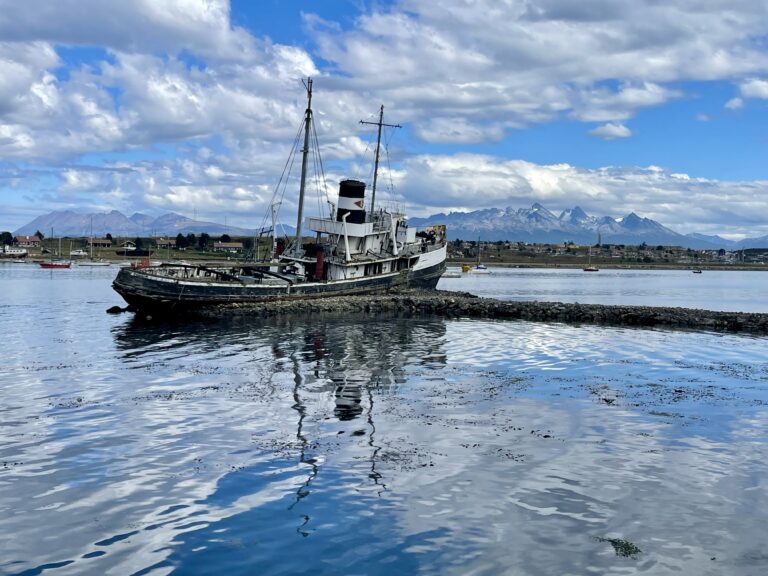
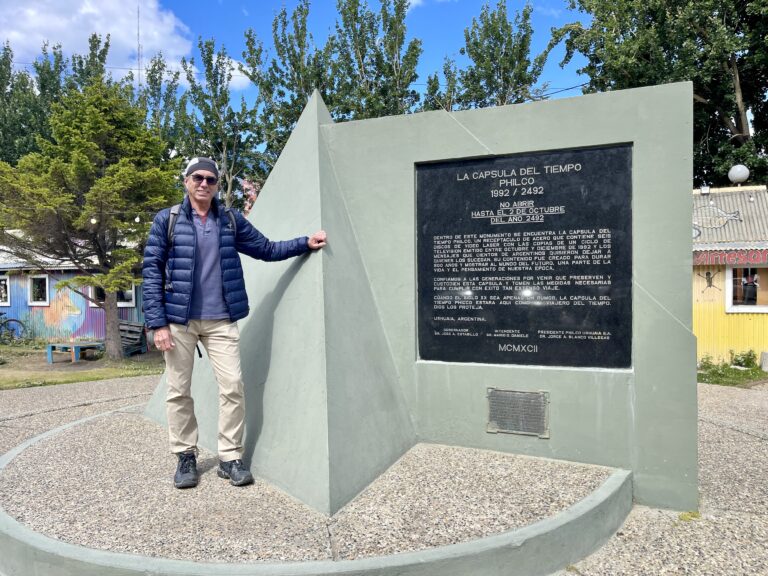
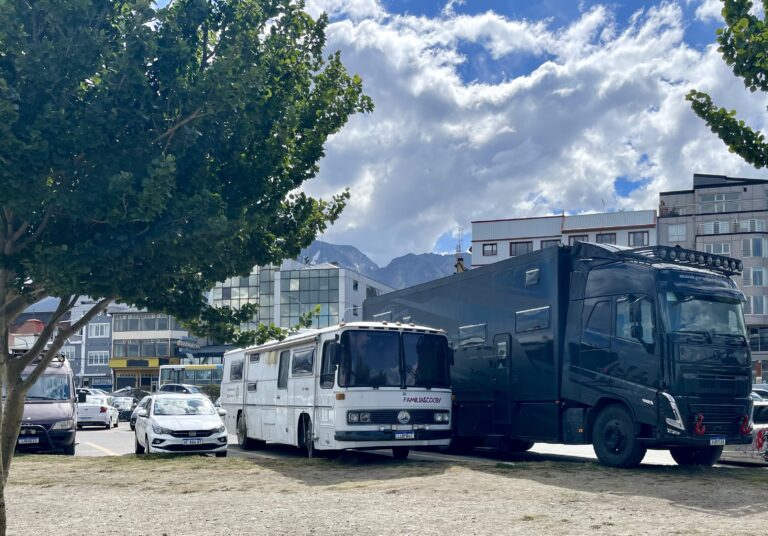
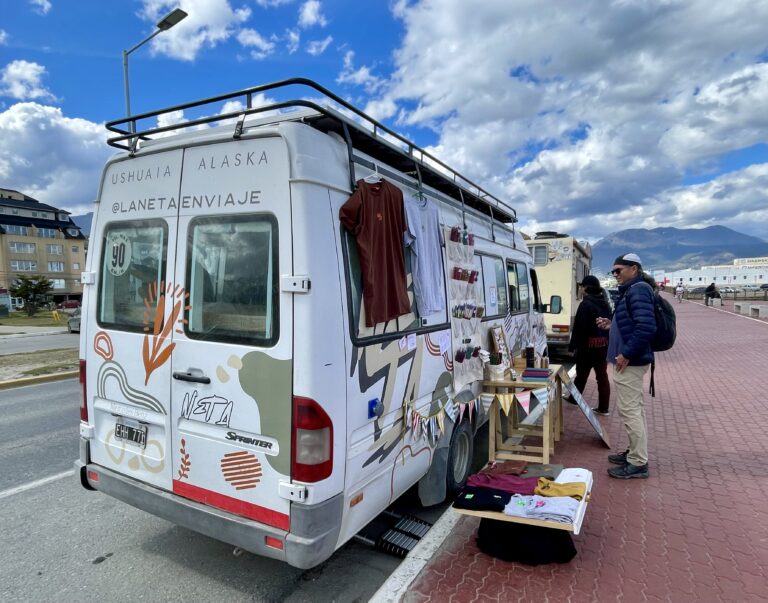
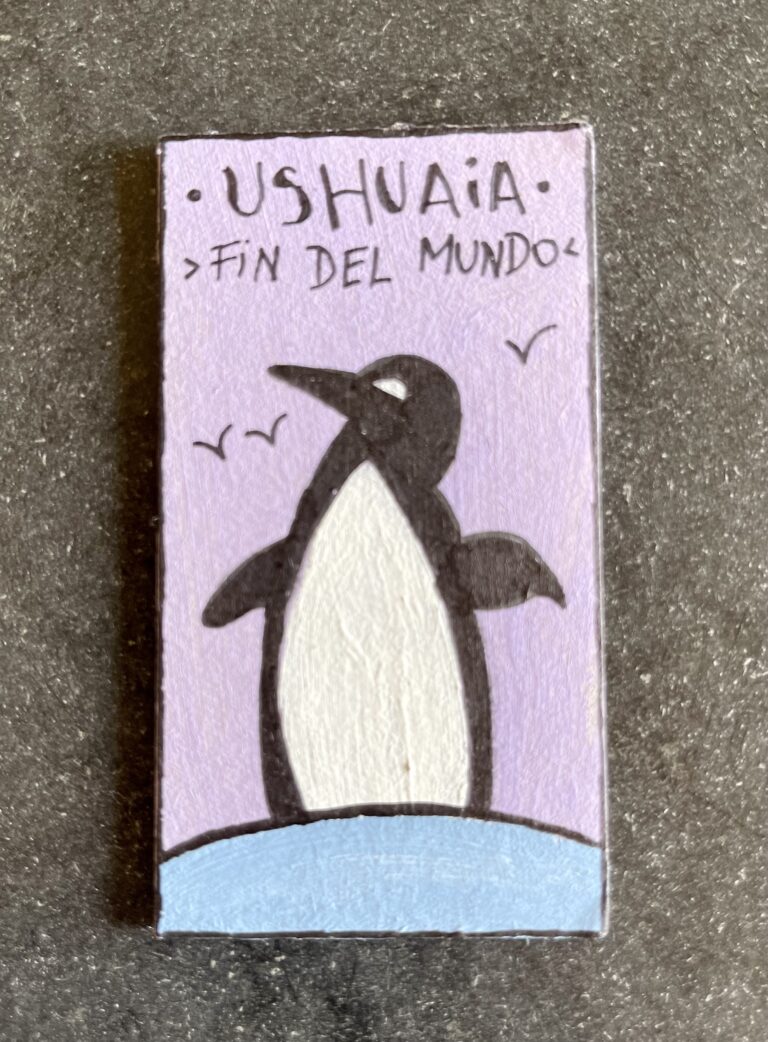
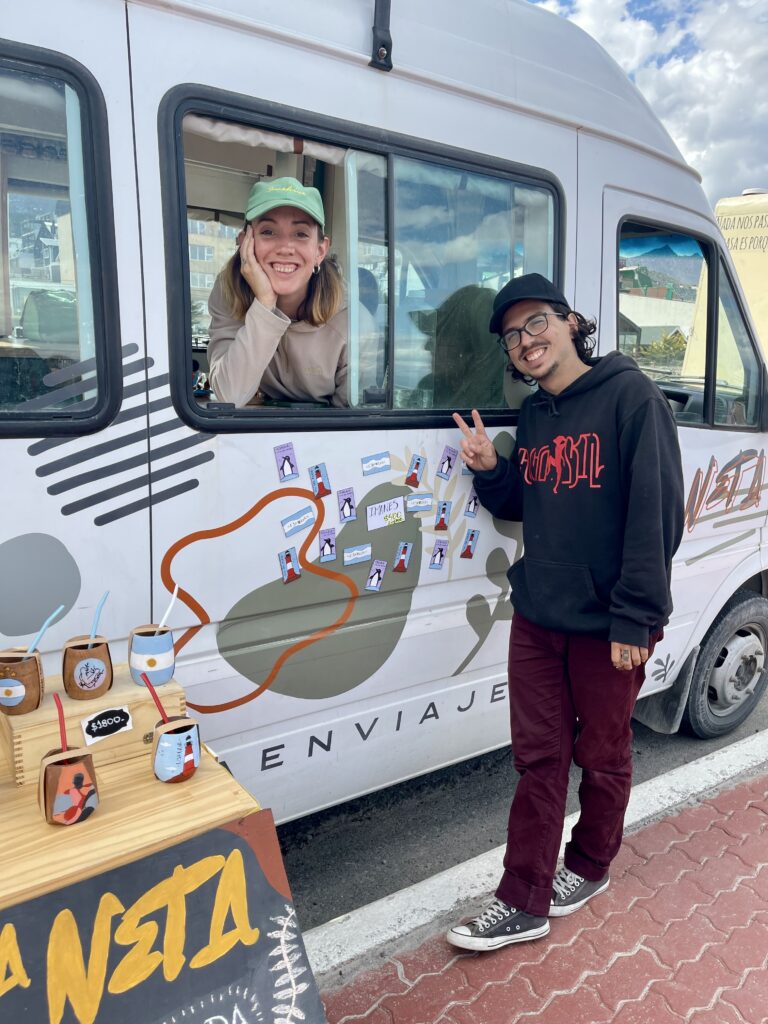
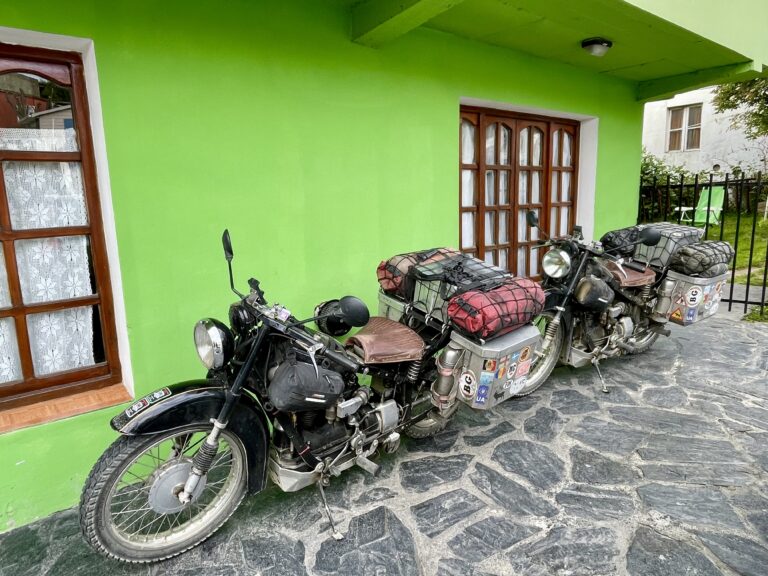
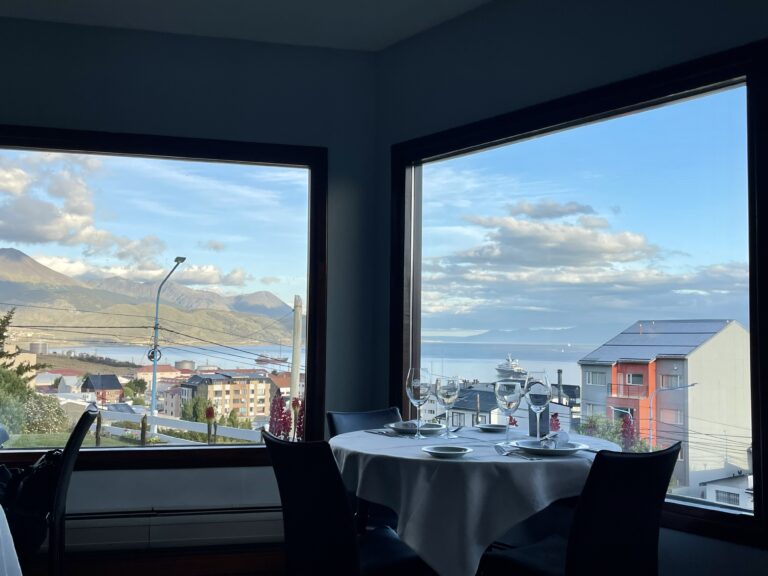
One Response
Love the penguins!